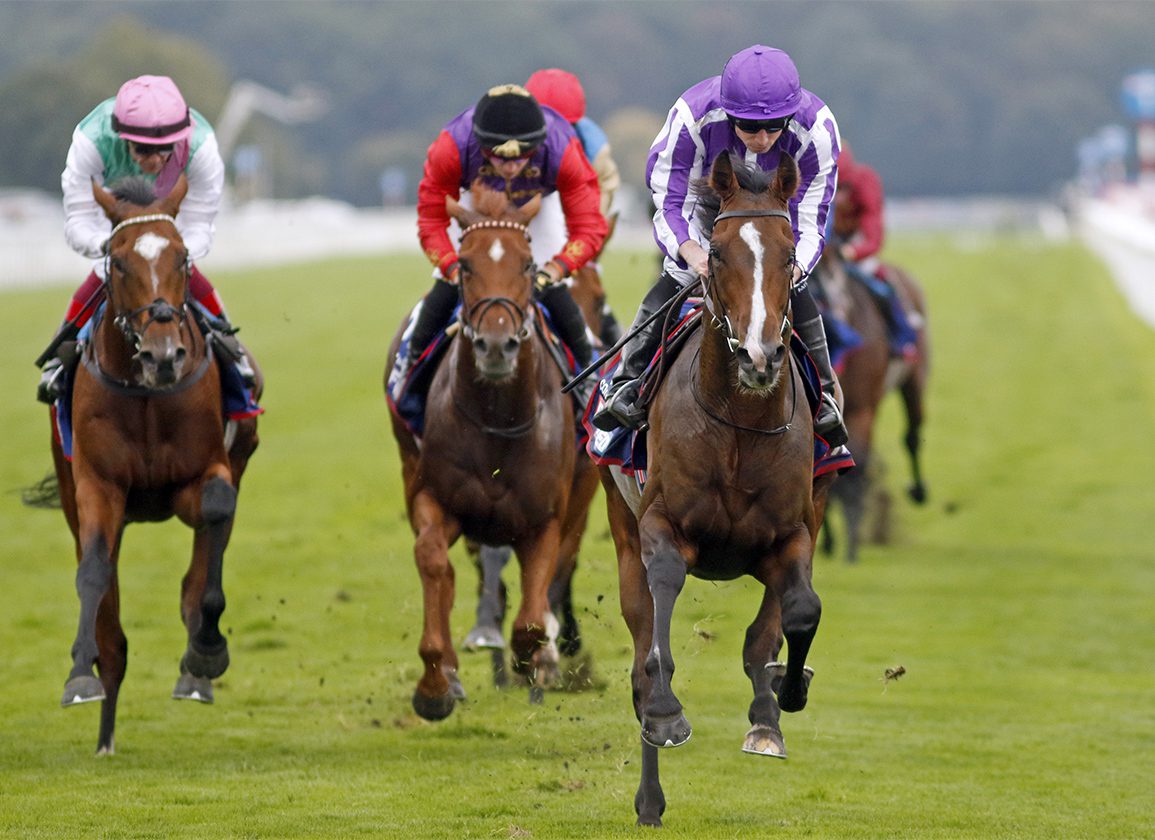By Paul Hayward
The Corinthian quest is finding life tough. These days romance is run off its legs by finance. Victory for Continuous in the Prix de l'Arc de Triomphe, though, 15 days after his St Leger win, would make history of the most reassuring kind.
Each week frontiers in sport are crossed: stats shredded, records set, barriers smashed. With every new 'first' the surviving 'nevers' gain mystique. Racing still has a few. No horse has won the St Leger and the Arc in the same season. It was hard enough already with a three-week gap. This year Continuous could be squeezing it into a fortnight.
Enhancing the intrigue is the knowledge that Continuous's owners are not sentimental strategists. Stirring the public's imagination isn't the first job of an Aidan O'Brien horse in Coolmore colours. If it happens, all well and good. The priorities though are winning, prize-money and stud values.
Yet every now and then we see an illustrious O'Brien Thoroughbred chase something grander than commercial worth. Continuous is on that path. Before him, O'Brien's Camelot was appointed to become the first Triple Crown winner since Nijinsky in 1970. A three-quarter length defeat to the 25-1 shot Encke in the Leger was the resting place for that noble dream.
Avoidance is a modern reflex. In heavyweight boxing risk-aversion has addled the sport's marquee division. Real Madrid can't decline a Clasico fixture with Barcelona. But in racing horses can be confined to comfort zones. Derby winners may be chauffeured off to covering sheds to avert the possibility of defeat. In National Hunt racing last week the announcement that Constitution Hill would stick to hurdling this season was not well-received by armchair proponents of boldness. Their horse, their choice, is the riposte.
Victory in Paris would add lustre too to the St Leger in an age when the case for stamina as a glamorous attribute feels harder and harder to win
Yet 'the lads,' as O'Brien calls the Coolmore team, are sometimes true to Saul Bellow's line: “A man's life is not a business.” Their reaction to Camelot's defeat at Doncaster was not to give up on the Triple Crown. Only six months ago it was the target set for Auguste Rodin, who crashed out at stage one, in the 2,000 Guineas, but progressed nevertheless to stardom.
O'Brien's last four St Leger winners all tried their luck straight away at Longchamp. Kew Gardens (seventh), Capri (17th), Leading Light (12th) and Scorpion (10th) proceeded to Paris. None made it seem a good idea; but Continuous, you sense, would travel to France with more authority and a bigger chance.
“He's a hardy horse and he could back up,” O'Brien said after the seventh St Leger win of his training career. Continuous has speed to go with his stamina and the mark of an autumn horse. He began 2023 underwhelmingly with three defeats but now acts like the boss. Within days of his Doncaster win he had shortened from 12-1 to 8-1 for the Arc.
So, let's line up the historians by Longchamp's winning post? Maybe, but at their own risk of having an idle day. Ballymoss won the 1957 Leger and the 1958 Arc but had a year in between to think about it. The demands of a 1m 6f Classic for three-year-olds are distinct from an all-age European championship over a mile and a half. It's not an obvious progression, especially with the proliferation of big autumn targets, which were less numerous in Nijinsky's time.
By any measure the Arc is a gruelling race to win. And at the end of a hard campaign we enter the realm of the unknowable, unseeable vulnerabilities veiled by form. Eight horses have won the Arc twice but none has scored a treble. When Enable tried, many reasons could be found for thinking her brilliance would carry her. When she failed, it seemed strangely obvious that it was a mission too far. There is a reason why frontiers stay uncrossed. It's because they're beyond equine endurance, even with the best pedigrees, trainers and jockeys to call on, though Nijinsky's pomp was finally ended in 1970 not by fatigue so much as a narrow tactical defeat in the Arc.
O'Brien has harvested English and Irish Classics but could be said to have something of an itch, by his standards, at Longchamp. Most trainers would retire content with two Arc wins (Dylan Thomas in 2007 and Found in 2016). You might have a small bet however on O'Brien being desperate to bring his Arc record closer to his extraordinary tally of English and Irish Classic wins.
A €120,000 supplementary fee four days before the Arc would buy him another ticket to ride, with a Japanese-bred horse by Heart's Cry. And victory in Paris would add lustre too to the St Leger in an age when the case for stamina as a glamorous attribute feels harder and harder to win.
It is the way of modern sport that people talk less these days of “making history,” except as a sardine tossed to the media, or with one eye on the financial rewards. But when racehorses make history, we sure as hell honour it. We remember the trailblazers more keenly – and with gratitude. They answer the heart's cry.
Not a subscriber? Click here to sign up for the daily PDF or alerts.






